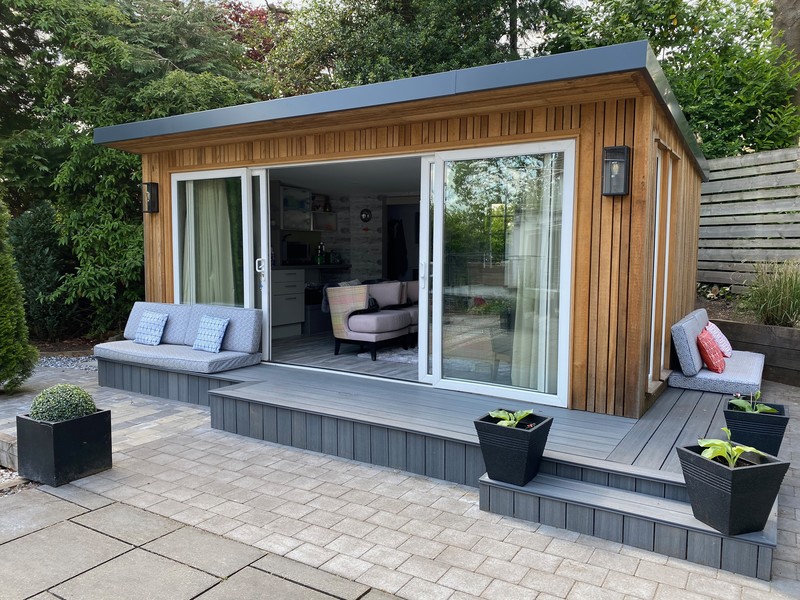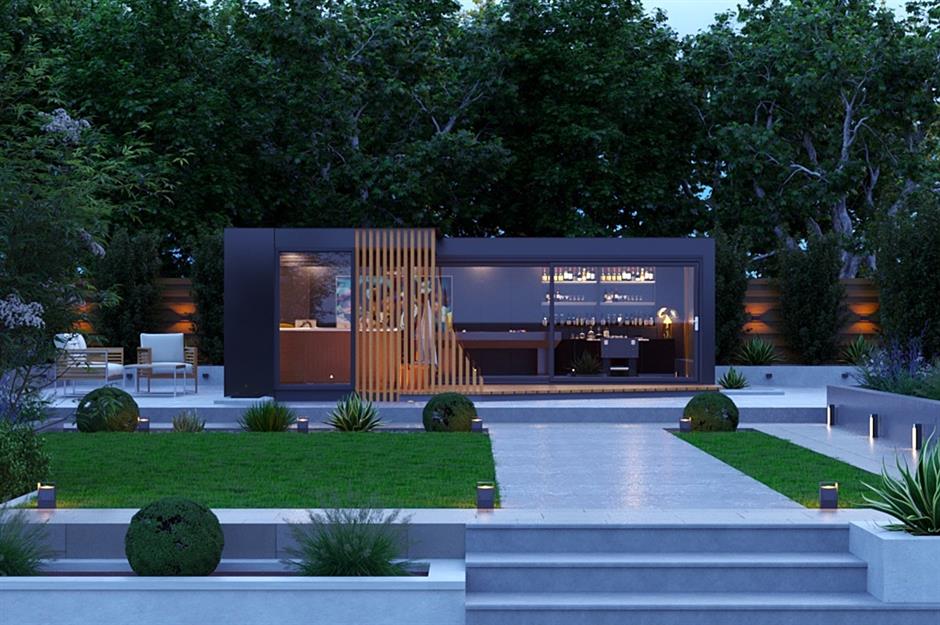Good Reasons On Planning Permission On Garden Buildings
Good Reasons On Planning Permission On Garden Buildings
Blog Article
What Type Of Planning Permission Do You Require To Construct Gardens In Conservation Areas?
Specific restrictions are in place to ensure the appearance and character within conservation zones. This applies to conservatories, garden rooms or outhouses. Planning permits are required for conservation areas. Here are some important points to consider.
Planning permission might be required for any building or extension which falls within the permitted development rights within a conservation zone. This includes garden sheds and other outbuildings.
Size and Scale
Planning permission might be required for any structure, regardless of size if it affects the nature of the conservation area. New buildings and extensions in designated areas are subject to stricter regulations.
The location of the property:
It is more typical to need planning permission for additions and structures which are situated in front or on the sides of the home. The rear of structures could be a problem if they are visible from public spaces, or if they affect the general appearance.
Materials and Design
Design and material selection is important in conservation areas. The materials employed in any new building or extension should be in harmony with the architectural or historic interest of the surrounding area. To ensure that these criteria are fulfilled, planning permission is required.
Demolition:
In conservation zones, the demolishment of existing structures and portions of buildings (including outbuildings wall boundaries, outbuildings, etc.) typically requires planning approval to ensure any modifications are compatible with the characteristics of the area.
Height Restrictions:
Height restrictions are stricter in conservation areas. If a structure is more than 2.5 meters in height It is highly likely that planning permission is required.
Impact on surrounding areas
Planning permission is required when the building or extension proposed will impact the appearance or visual setting of the Conservation Area, in addition to the views that pass through and exit the area.
Use of the building:
A garden room, outbuilding, or studio might not require planning permission if its use is allowed.
Additions and Alterations
Extensions that go beyond certain dimensions or volumes or alter the external design of the building usually require planning permission. This includes conservatories as well in other significant changes.
Curtilage Structures:
In a conservation zone the structures within the boundary of a listed property require approval for planning. This applies to any additions or modifications, as well as new outbuildings.
Protected Trees:
Trees within conservation areas are protected. If you intend to build a structure on trees additional permits, like permission for tree works and planning permissions, might be required.
Local Authority Guidelines
Local planning authorities may establish particular guidelines to govern conservation areas. These may include specific guidelines on what is permissible and not, specifically tailored to the specific nature of the region.
In summary, to obtain planning permission for conservation areas, you must assess the way your conservatory or garden space will impact the area's historical and architectural character. Consultation with your local planning authority before beginning the planning process is essential to ensure that the project complies with all relevant regulations and guidelines. View the recommended garden room conservatory for website examples including armoured cable for garden room, costco garden buildings, do you need planning permission for a garden room, garden room permitted development, myouthouse, outhouses for garden, composite garden office, garden room planning permission, armoured cable for garden room, myouthouse and more.
What Is The Environmental Impact Of The Garden Rooms, Etc.?
It is essential to think about the environmental impact when designing garden rooms or conservatories. Here are key environmental considerations: Biodiversity:
If the proposed structure would affect wildlife habitats within your region, like local hedgerows, trees or ponds then you will need permission to plan the project. To assess and minimize the impacts of biodiversity, an ecological survey might be needed.
Protected Species and Habitats:
Planning permits are required if the site contains protected animals (e.g. newts, bats) or is located in or near habitats of Special Scientific Interest (SSSI). To protect them, special precautions must be taken.
Preservation Orders for Trees Preservation Orders
If the proposed construction involves the removal or alteration to trees covered by TPOs then planning permission is required. The local authority may ask for replacement plantings or other mitigation measures.
Risk of flooding and Water Management Risk and Water Management
Planning permission is required to build near the shoreline or in flood-prone areas. A assessment of flood risk (FRA) may be required to ensure that the building does not increase flood risk and is equipped with drainage solutions.
Sustainable Construction Practices:
It could be necessary to obtain planning permission in order to utilize sustainable construction materials and practices. This may include considerations regarding energy efficiency, insulation, as well as carbon emissions of building materials.
Surface Runoff and Drainage
Environmental considerations include the impact of a building's construction on surface water runoff and drainage. Planning permission is required for proper drainage systems in order to prevent flooding and waterlogging.
Soil and Land stability:
If the construction could affect soil quality or land stability Planning permission is required. This could include issues such as subsidence or erosion of the soil, in particular on sloped areas.
Air Quality:
Planning permission is required to build development near major highways or industrial zones that can impact local air pollution. It ensures air pollution levels remain within acceptable limits, and that mitigation measures are put in place.
Noise Pollution:
Planning permission will be required if the use of the garden or an extension would likely create significant noise, like an music studio or workshop. The local authority must evaluate noise levels, potential impacts on neighbors and the environment.
Waste Management:
A well-organized waste management system throughout and post-construction is crucial. Planning permission is required to ensure that sufficient facilities are provided for recycling and disposal of waste to minimize environmental impacts.
Energy Efficiency
The approval of a plan permit might need energy efficiency standards such as the use solar panels, high-performance glass, or other green technology. This will reduce the environmental impact of the new structure.
Conformity to Environmental Regulations:
Environmental regulations exist at local and national levels as well as local level, such as the UK Environmental Protection Act. Planning permission assures that all legal requirements are met and that the development is environmentally sustainable.
The planning permission granted for garden rooms, conservatories and outhouses should also take into consideration a broad range of impacts on the natural environment. It is essential to speak with local authorities early on in the process of planning so that you can understand their needs. This will also ensure the project is sustainable and is in compliance with all applicable regulations. Follow the top composite outbuildings for blog info including garden rooms in St Albans, outhouse builders, garden buildings , composite summer house, garden room conservatory, what size garden room without planning permission uk, best heater for log cabin, garden rooms, how to lay decking on soil, what size garden room without planning permission and more.
What Planning Permissions Do You Require For Garden Rooms Etc With Regard To Agricultural Land?
If you plan to build an extension, a conservatory, garden office, an outhouse, or expand your property it is necessary to apply for permission to plan. Here are a few key factors.
The land that is designated as agricultural is normally utilized for agricultural or related activities. Planning permission is often required for changing the land use to garden structures or residential. It is essential to get permission to plan as the land's intended agriculture use is changing.
Permitted Development Rights:
The land of agriculture is often subject to distinct rights to development that are not available with residential land. Certain agricultural structures, for example, can be constructed with no planning permit. However, they are usually for agricultural structures that are not garden rooms or offices for residential use.
Size and Scale
The scale and size of the building determines whether or not planning permission is required. The larger buildings or those which cover a large portion of the space are more likely require permission.
The impact on the use of agriculture:
If the new structure reduces the area of land that is that is available for crops or livestock, then planning permission may be required.
Green Belt Land:
Additional restrictions are also imposed on land used for agriculture that is also classified as Green Belt to help prevent urban sprawl. Green Belt land is subject to strict criteria and approval for planning permits for construction of new structures.
Appearance and Design
The design and appearance of the building must be consistent with the rural characteristics of the region. Planning permission will ensure that the proposed structure doesn't negatively alter the natural landscape.
Environmental Impact:
Construction on agricultural lands must be considered in relation to the natural environment. Planning permission could require an environmental assessment to ensure that the proposed structure does not harm local ecosystems or wildlife habitats.
Distance from structures
The planning requirements could be impacted due to the proximity of a proposed garden office or room close to an existing building for agriculture. Buildings that are located near farms are viewed differently from the ones constructed on open fields.
Access and Infrastructure:
The impact of access and the infrastructure, such as water supply, roads and waste management, need to be considered. The planning permission will determine whether the infrastructure in place can accommodate a building.
Use the Class Order:
The law of planning defines the use classes that are applicable to agricultural land. Planning permission is usually required to change the use category of a structure to one that does not fall under the agricultural category.
Local Planning Policies
Local planning authorities create specific guidelines for agricultural land. Local planning authorities have specific guidelines for land that is used for agriculture.
National Planning Policy Framework (NPPF):
The National Planning Policy Framework in the UK sets out guidelines for how land should develop and be used. Permissions to plan on agricultural land are assessed in the perspective of the NPPF. This emphasizes the need for sustainable development and rural areas.
Generally, permission to build extensions, garden rooms, or conservatories on agricultural property is required due to the need to alter its use, and also to ensure compliance with both federal and local planning guidelines. Consultation with the local planning authority is essential to establish the exact requirements and get the necessary approvals. See the top how to get electricity to garden office for website info including outhouse garden, garden room or extension, garden office, what is a garden room, garden room conservatory, armoured cable for garden room, insulated garden buildings, costco outhouse, costco outbuildings, what size garden room without planning permission and more.